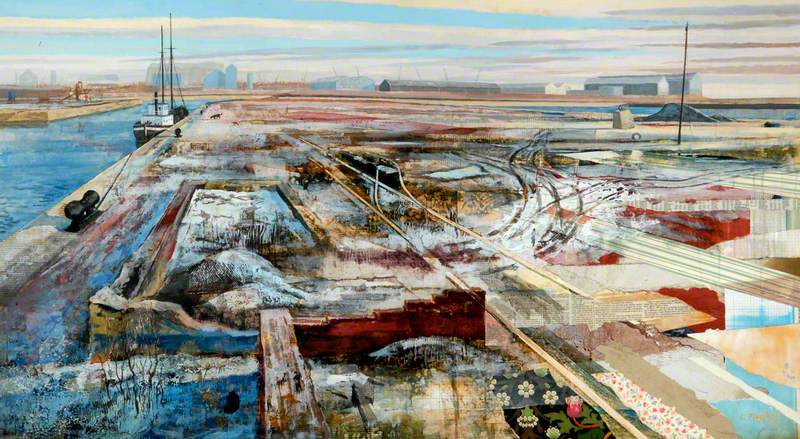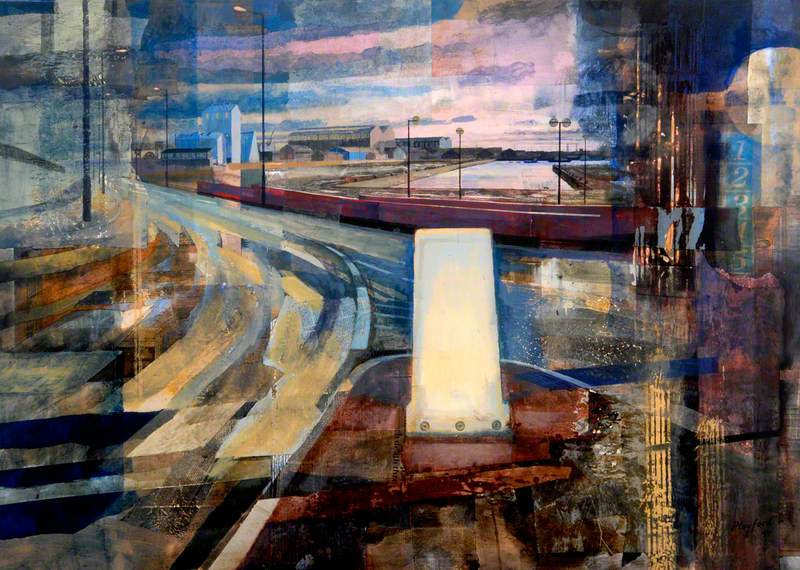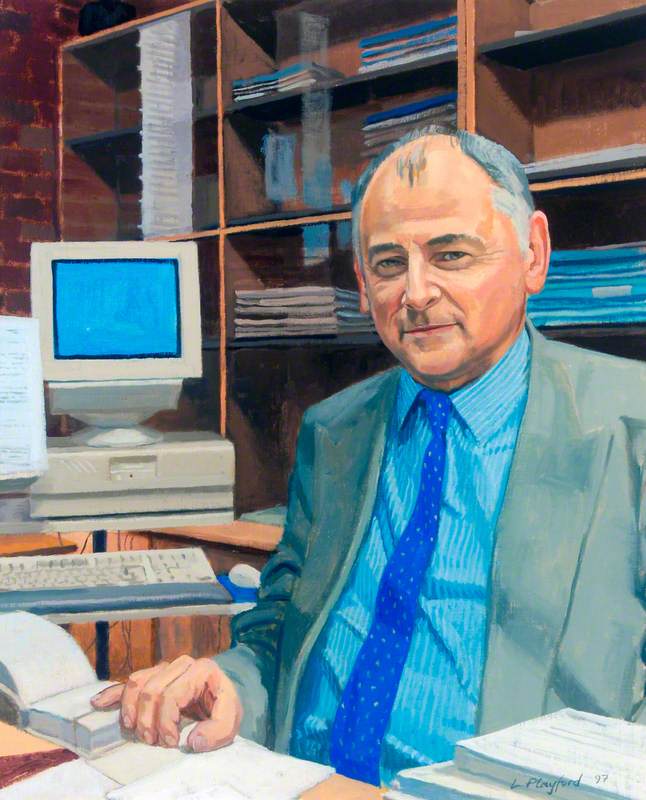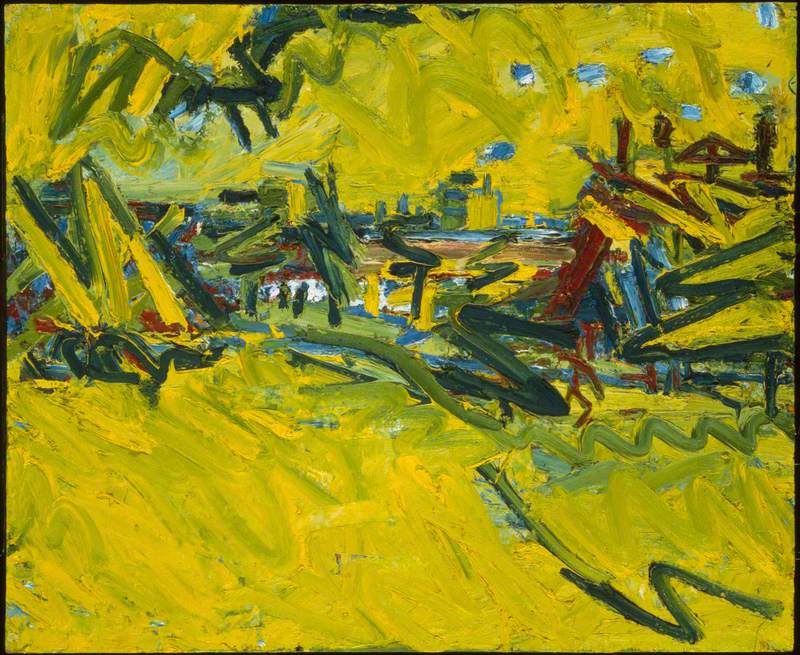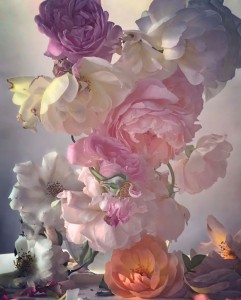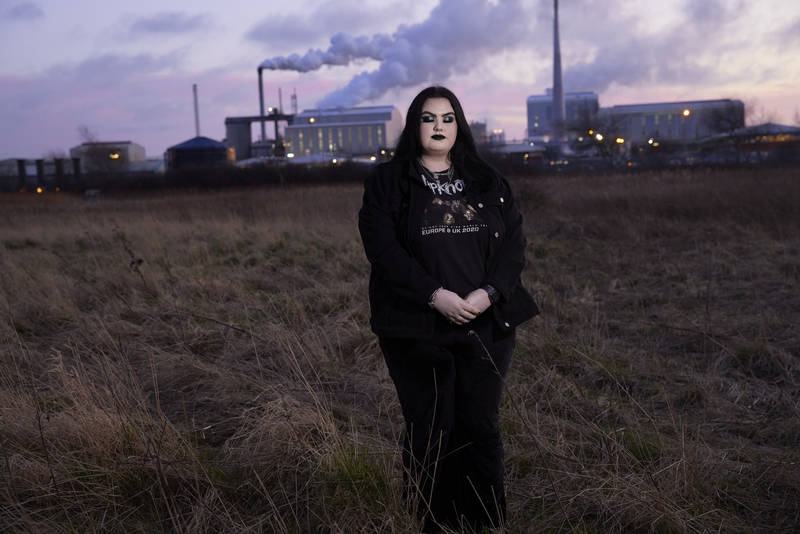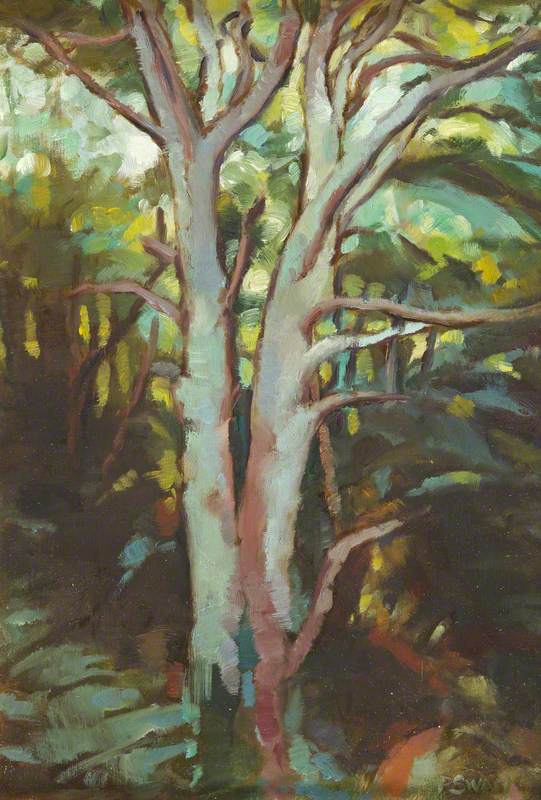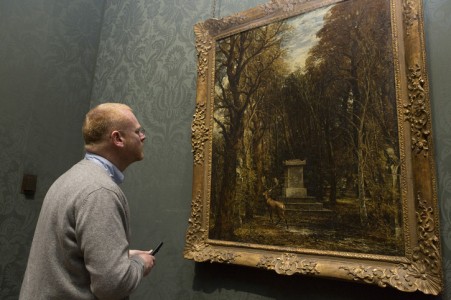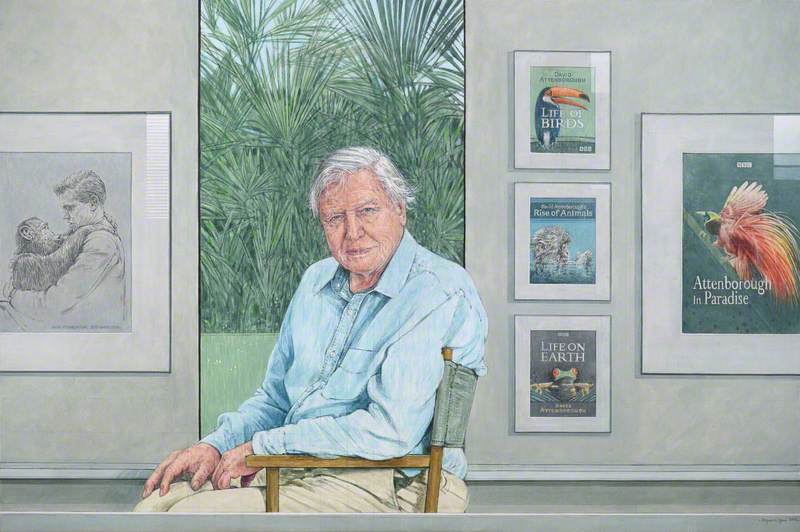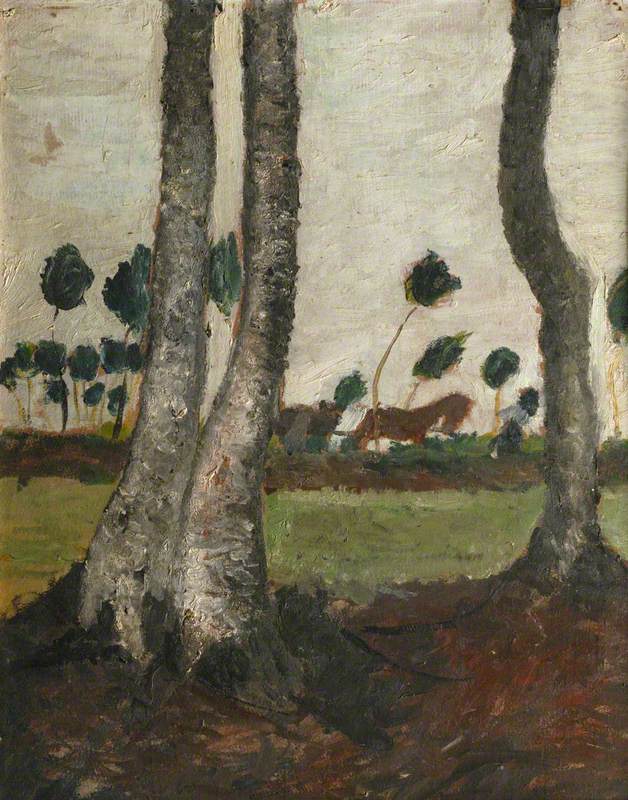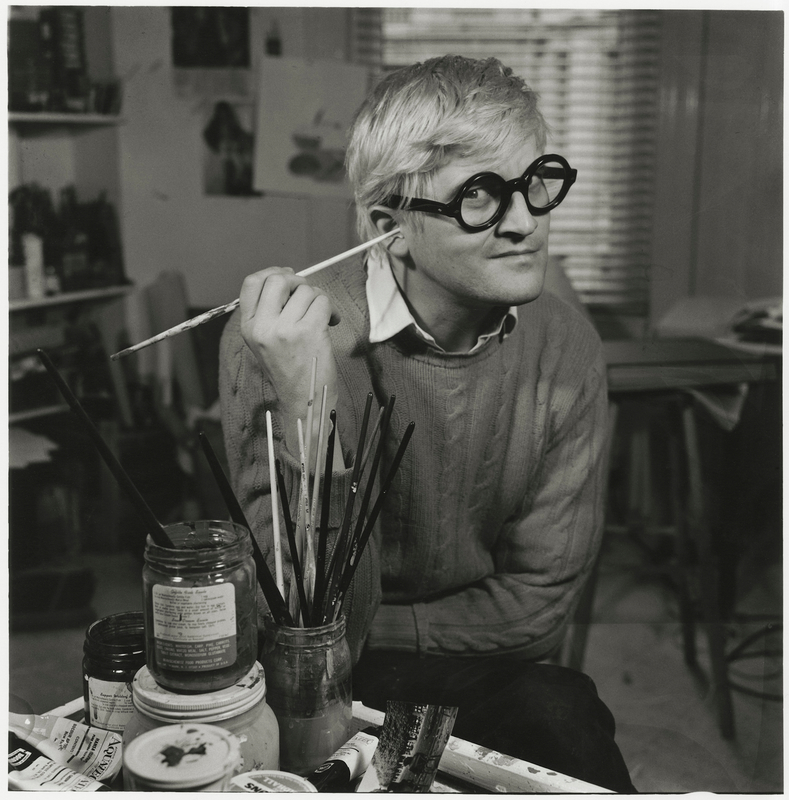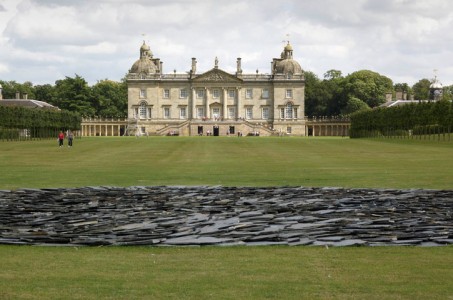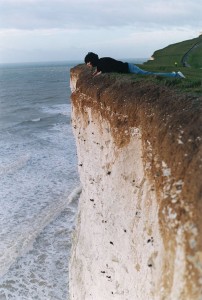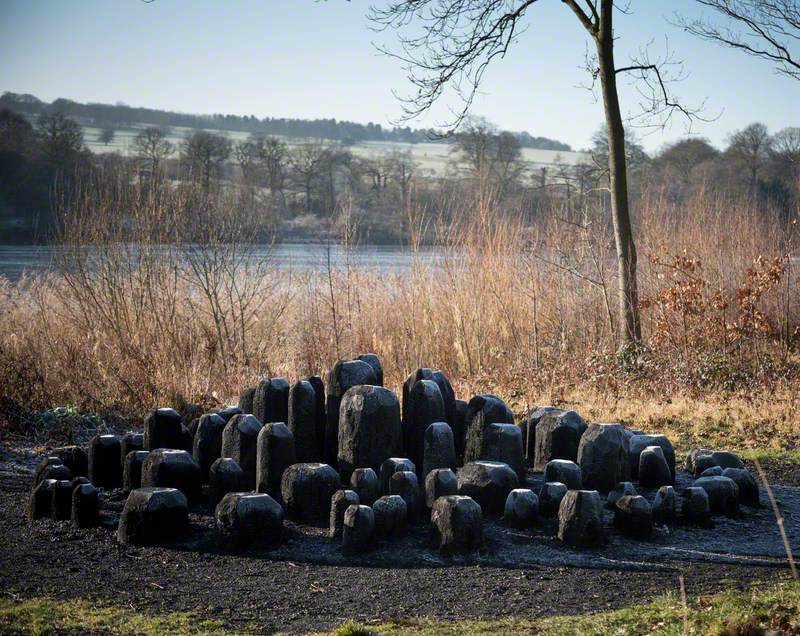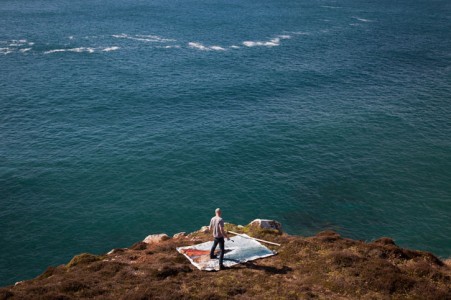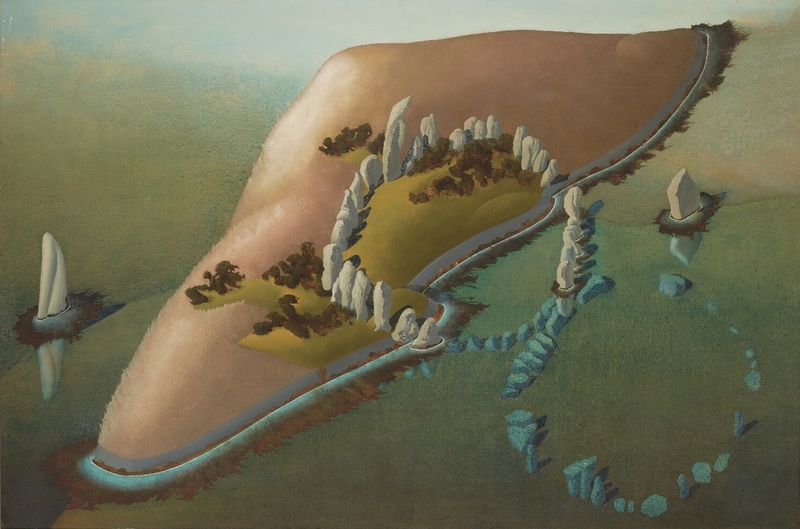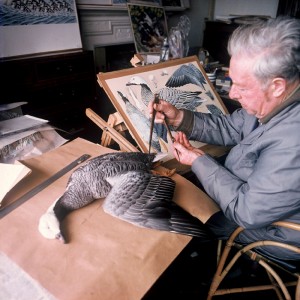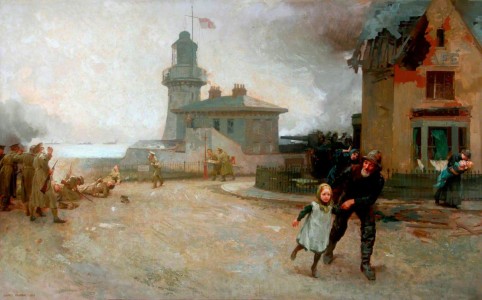Lionel Playford is best known for his depictions of the unique landscapes of northern Britain. Throughout his artistic career, the distinctive rhythms of nature have inspired him and his affinity with the natural environment has led to a determination to highlight the threat posed to the pockets of woodland all around us.
From 1992 to 1993, Lionel was artist-in-residence at Castle Eden Dene National Nature Reserve, the largest area of natural woodland in the North East. Situated in a deep limestone gorge, its inaccessibility has meant that it was never cleared to make way for housing, industry or agriculture. The result is a wild and mysterious world that has been growing for more than 10,000 years.
'Revering Ancient Woodland' at Hartlepool Art Gallery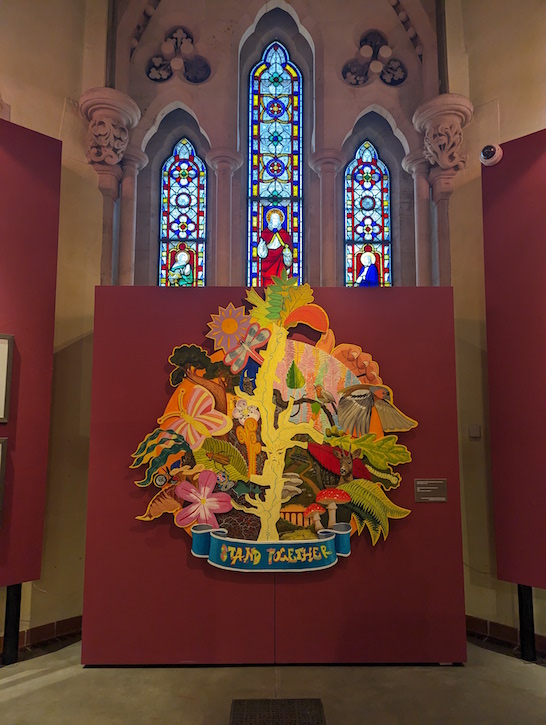
Thirty years on, Hartlepool Borough Council commissioned Lionel to return to Castle Eden Dene with a local group of young people. The group learned about the work of Natural England as well as the history of the site, its ecology and why places like it are so important in supporting complex ecosystems. For many of them, this was their first visit to an ancient woodland and their first opportunity to understand the importance of such sites. They photographed and sketched anything that interested them, then worked with Lionel to learn artistic techniques, from collage to watercolours. Together they produced an artwork in homage to this special place, which forms the centrepiece of Lionel's exhibition at Hartlepool Art Gallery, 'Revering Ancient Woodland', on display until 3rd June 2023.
'Revering Ancient Woodland' at Hartlepool Art Gallery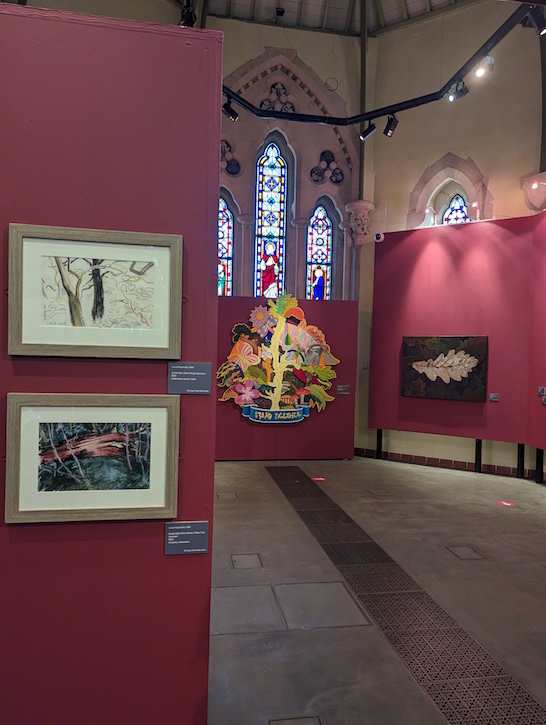
Angela Thomas: Did you always aspire to be an artist?
Lionel Playford: I always assumed I was an artist from as far back as I can remember, despite becoming, at different times, a shipbuilder and a cultural geographer. Artists became my heroes and the more I discovered what they made – painters in particular – the more intrigued, baffled and amazed I was. There seemed to be no limit to their imagination which is both exciting and daunting – especially when, as an adult, you begin to realise your own limitations. I'm still aspiring to be an artist.
Angela: How has your practice changed over time?
Lionel: Enormously. At the core is a curiosity about images and how they relate to the world. I've explored many different subjects – from portraits and the figure, to still life, to surreal landscapes – but my practice has always searched for a definite expression. I suppose change happens in fits and starts as you discover things for yourself and try out other artists' ideas. Eventually, you begin to notice your own style.
The temptation for many artists is to make what other people seem to like and then stick to that for as long as it sells, but I think that's a waste of a creative life, although it's a reasonable business model if the main purpose of painting is to make money. I like to look at artists who constantly challenge themselves even when they have become famous, like David Hockney or Frank Auerbach.
I suppose 'developing your creative practice', to misquote an Arts Council phrase, is about assessing what seems to work for yourself. I dream of using larger canvases and lashings of amazing oil paint to make images of sea ice, which I've never seen, or curtains of sunbeams over the Vale of Eden, which I see often.
'Revering Ancient Woodland' at Hartlepool Art Gallery
artwork by Lionel Playford (b.1959) 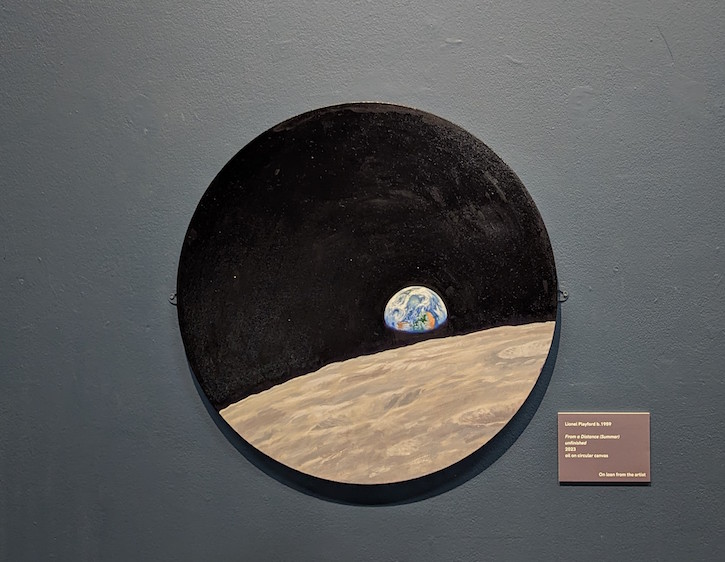
Angela: What does a day in the life of Lionel Playford look like?
Lionel: No two days are the same, but on an ideal day it starts with drawing as a way to warm up. The moment I pick up a mark maker to apply to a surface there is this unique moment where everything could go right or wrong – or neither. The unpredictability of what could happen is both exciting and daunting. On a safe day, I'm too cautious and the results are weak, but on a more audacious day, exciting things can happen, or it might all end in disaster, like my attempt to paint a portrait in four hours during the insane Portrait Artist of the Year competition.
In an ideal world, I would delegate all the boring, time-consuming stuff to a well-paid assistant. You need time to make, draw, explore ideas, experiment, move difficult pieces to a better place, walk in nature and draw what you find there. But you also need time to read and look at images, especially paintings and drawings, go to exhibitions and watch documentaries about nature and art.
If you'd asked me the question a few years ago my days would have been dominated by sitting in front of a computer screen, writing and reading for a PhD in art-science but eventually I realised, although interesting, even fascinating, it was not where my talents lay nor what I should be doing with my life. The experience has broadened my knowledge and I took special journeys with scientists to a Lake District peat bog, to Finland, Germany and the Atlantic Ocean – but in the end, I have to be making art and these travels don't necessarily help me to make better art.
'Revering Ancient Woodland' at Hartlepool Art Gallery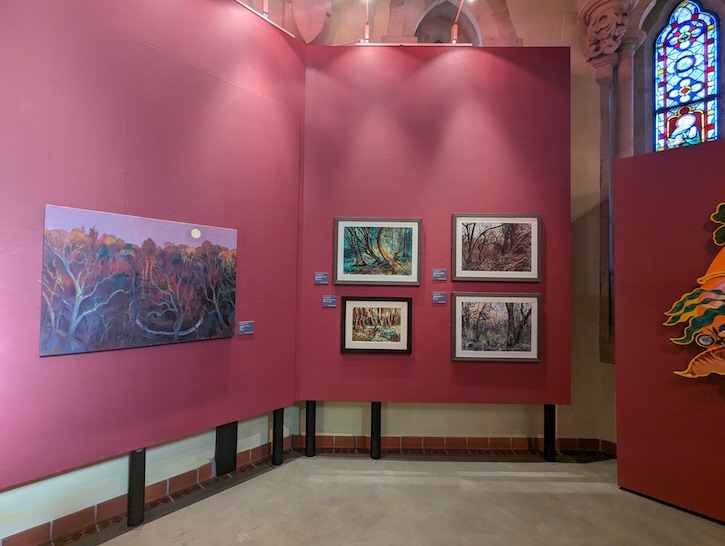
Angela: Is there one artist from the past that has had an influence on you?
Lionel: No, far more than one! John Piper strongly influenced my techniques of outdoor drawing and I still lean on him to this day. Corot had a strong impact on my early outdoor painting, as did Cézanne. Turner's atmospheric skies and water continue to work on me. Edward Hopper's tension in stillness, especially in his nocturnes, had a powerful effect for a while. Dod Procter taught me portrait realism. Different artists keep you thinking and challenge what you're doing. I'd like to be influenced more by Paul Nash but I'm also pulled in a different direction by Ivon Hitchens. Auerbach baffles but intrigues me.
Angela: You seem to be most inspired by the natural environment. What is it about being in nature that makes you want to create art?
Lionel: It's very beautiful despite the challenges of the weather. It's all around, even where I grew up in suburbia or down in the shipyard by the sea. We live in nature despite our seemingly powerful desire to separate ourselves from it in the built environment. I grew up in a time when we were encouraged to play outdoors and explore the world around and I've just never stopped.
Humans have changed the natural world in vast and profoundly troubling ways by foolishly assuming that nature was there for us to endlessly plunder. We all have a right to survive but if we trash our home then we're in for trouble.
'Revering Ancient Woodland' at Hartlepool Art Gallery
artwork by Lionel Playford (b.1959) 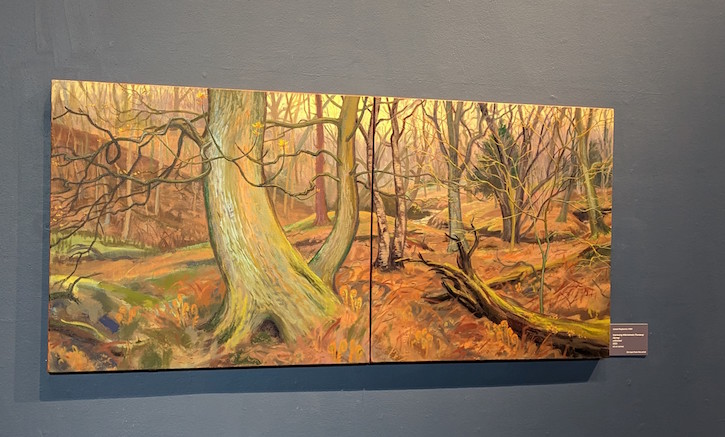
I remember some local authority woodland near where I lived in Leeds which became our place of wild adventure and freedom. One day the bulldozers started knocking the trees down, and it hurt. I felt for the trees and the birds and everything else that lived there and I painted some pictures about it as an act of witnessing but also of mourning. Unmanaged native woodland is one of the best places to nourish the soul, surrounded by birdsong, the wind in the tree tops, in dappled sunlight. From trees to plankton – even mountains, clouds and the sea: they all seem alive to me and they're all connected at some level. In the studio I want to re-enter that space, but in my imagination. Painting and drawing keep me in touch with external reality.
'Revering Ancient Woodland' at Hartlepool Art Gallery
artwork by Lionel Playford (b.1959) 
Angela: Do you work outdoors?
Lionel: As a youngster, the outdoors was an adventure and representing it directly in paint was a very exciting and challenging way of exploring it, which is why I still paint en plein air. I get mentally and creatively refreshed from working outdoors in nature, or in a motorway service station car park for that matter. I draw wherever and whenever I can, and I would recommend it to anyone for developing good mental health!
Angela: If you could choose just one work of art to save from Armageddon (from any artist – painting, sculpture, architecture or literature) what would it be?
Lionel: Impossible question, but if the world as we know it was destroyed when I was visiting the Courtauld Institute in London I would have to grab a Cézanne still life painting. They are endlessly fascinating.
Pot of Primroses and Fruit
1888–1890
Paul Cézanne (1839–1906) 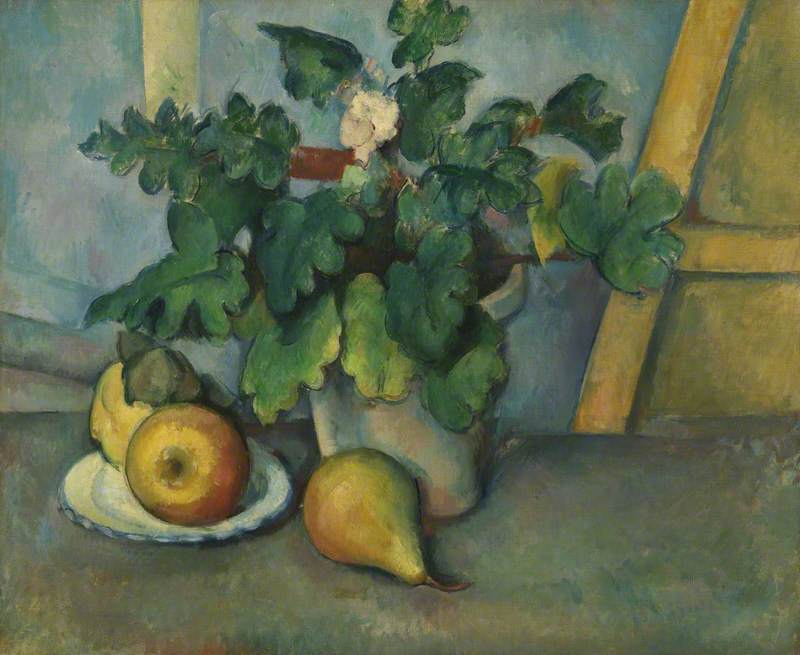
Angela: What would be your dream location if you could choose to work anywhere in the world?
Lionel: Hartlepool: there's no end of stimulating subject matter. But if that couldn't be arranged then maybe the Llyn Peninsular in north Wales, but I'd have to learn to converse in Welsh and read more Dylan Thomas. I could find subject matter for art almost anywhere but I couldn't manage somewhere too hot and sticky, so the tropics are out.
'Revering Ancient Woodland' at Hartlepool Art Gallery
artwork by Lionel Playford (b.1959) 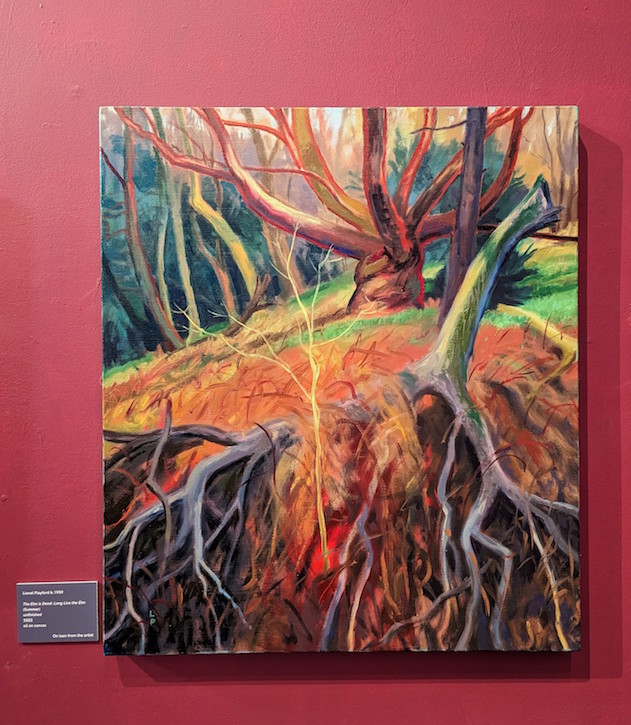
Angela: What would be your top tip to anyone thinking of pursuing an artistic career?
Lionel: I've taught many people who took up painting when they were older. The main thing is to stick at it, to keep making and questioning the results. Beyond that, take risks, explore different materials and subject matter and look closely at other artists, from whom you will learn what art could be. Do it for the love of art not for money or fame, otherwise you'll end up like Damien Hirst.
Angela Thomas, Art Gallery Curator at Hartlepool Borough Council
Lionel Playford's 'Revering Ancient Woodland' exhibition is on at Hartlepool Art Gallery until 3rd June 2023
